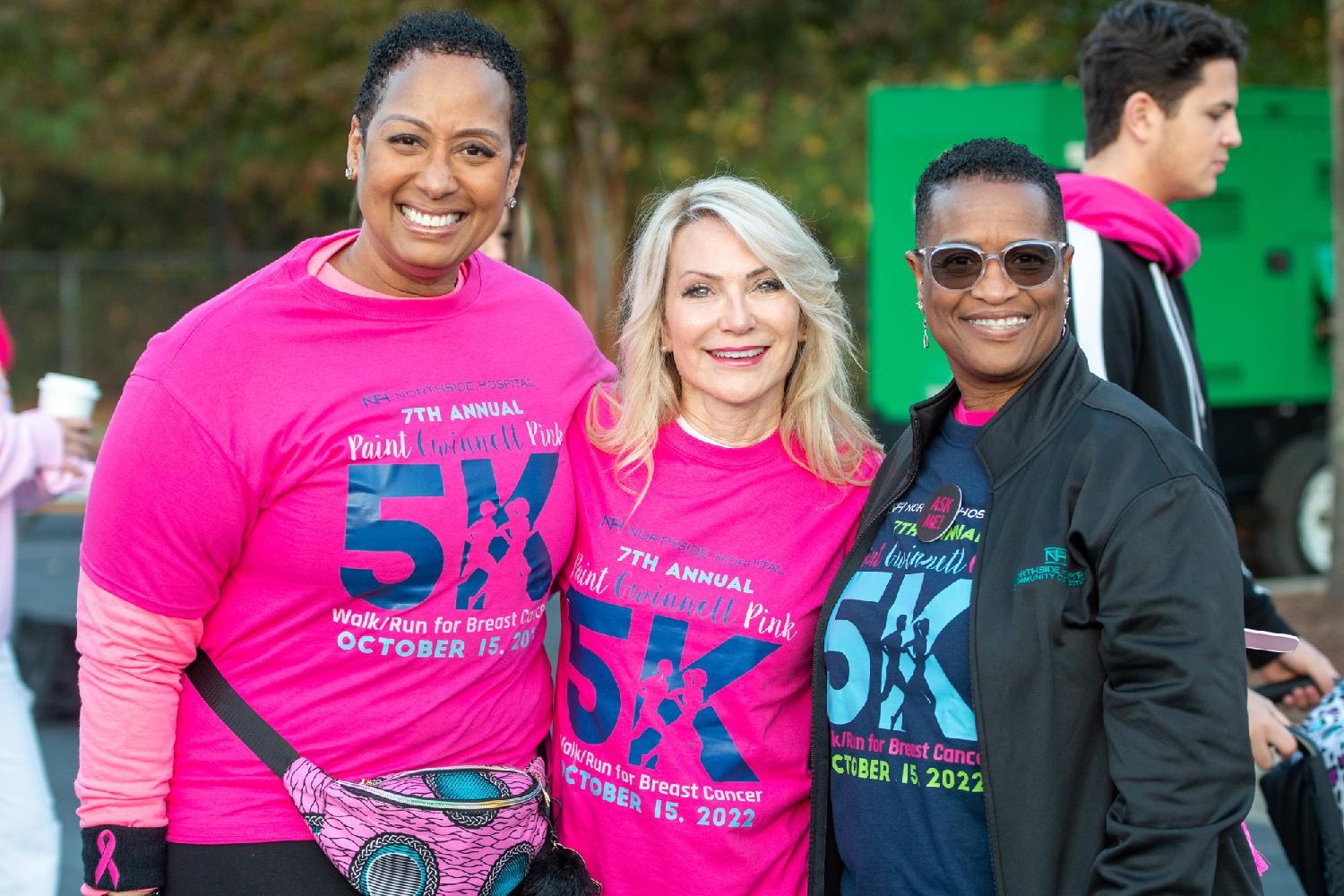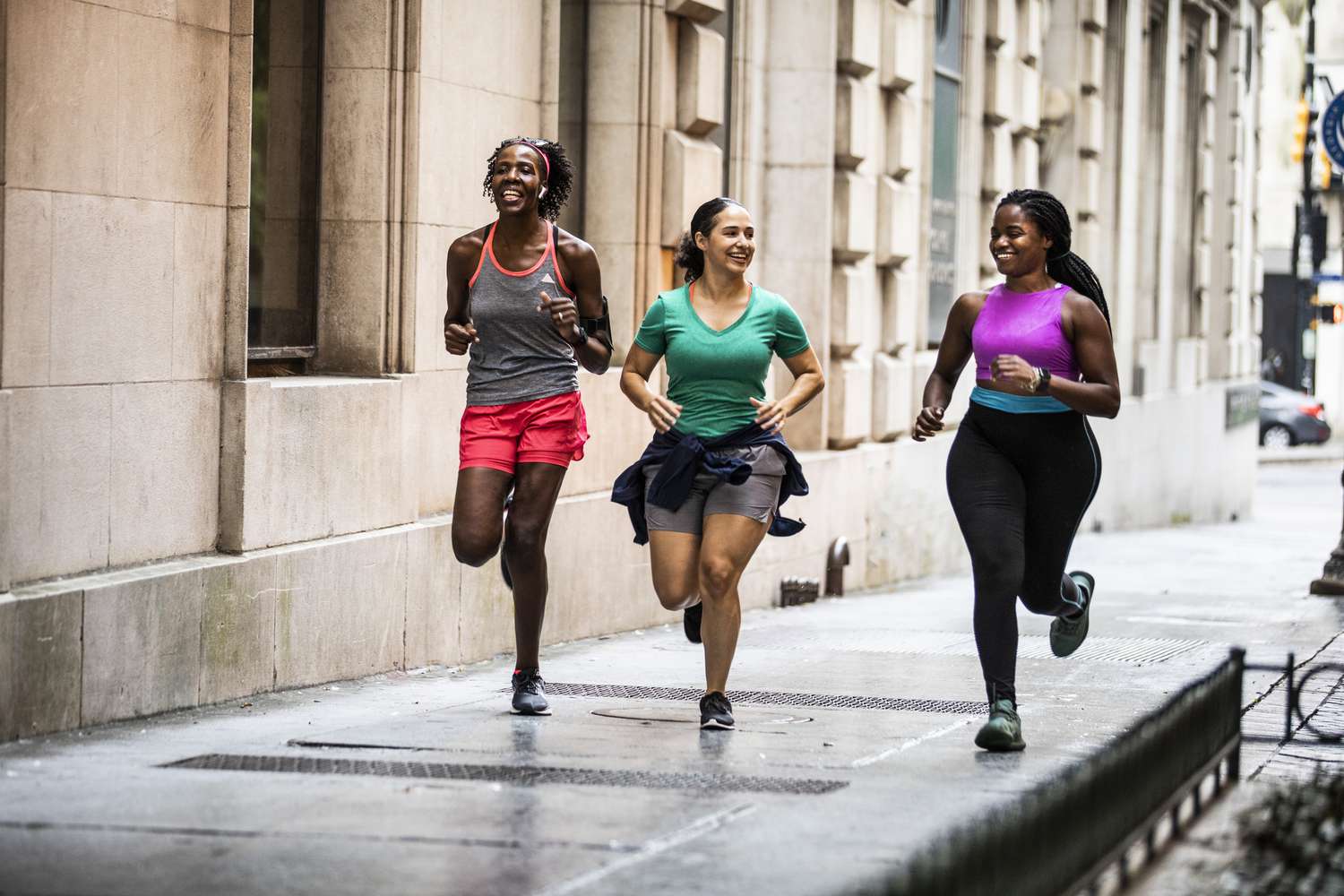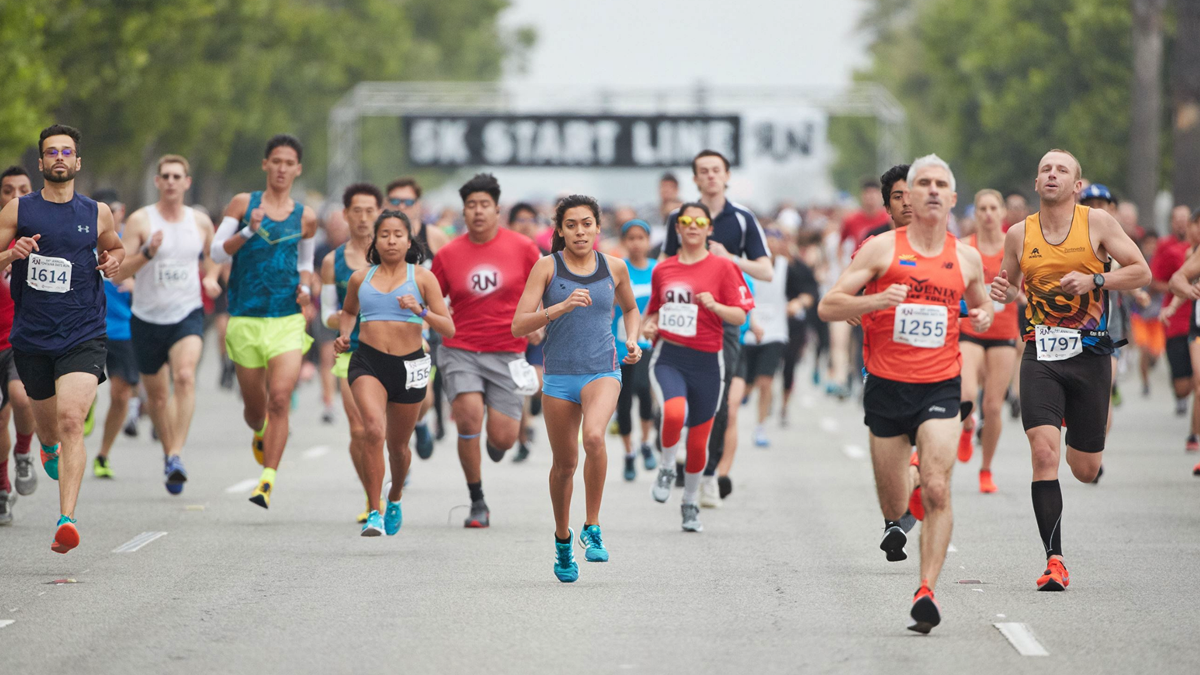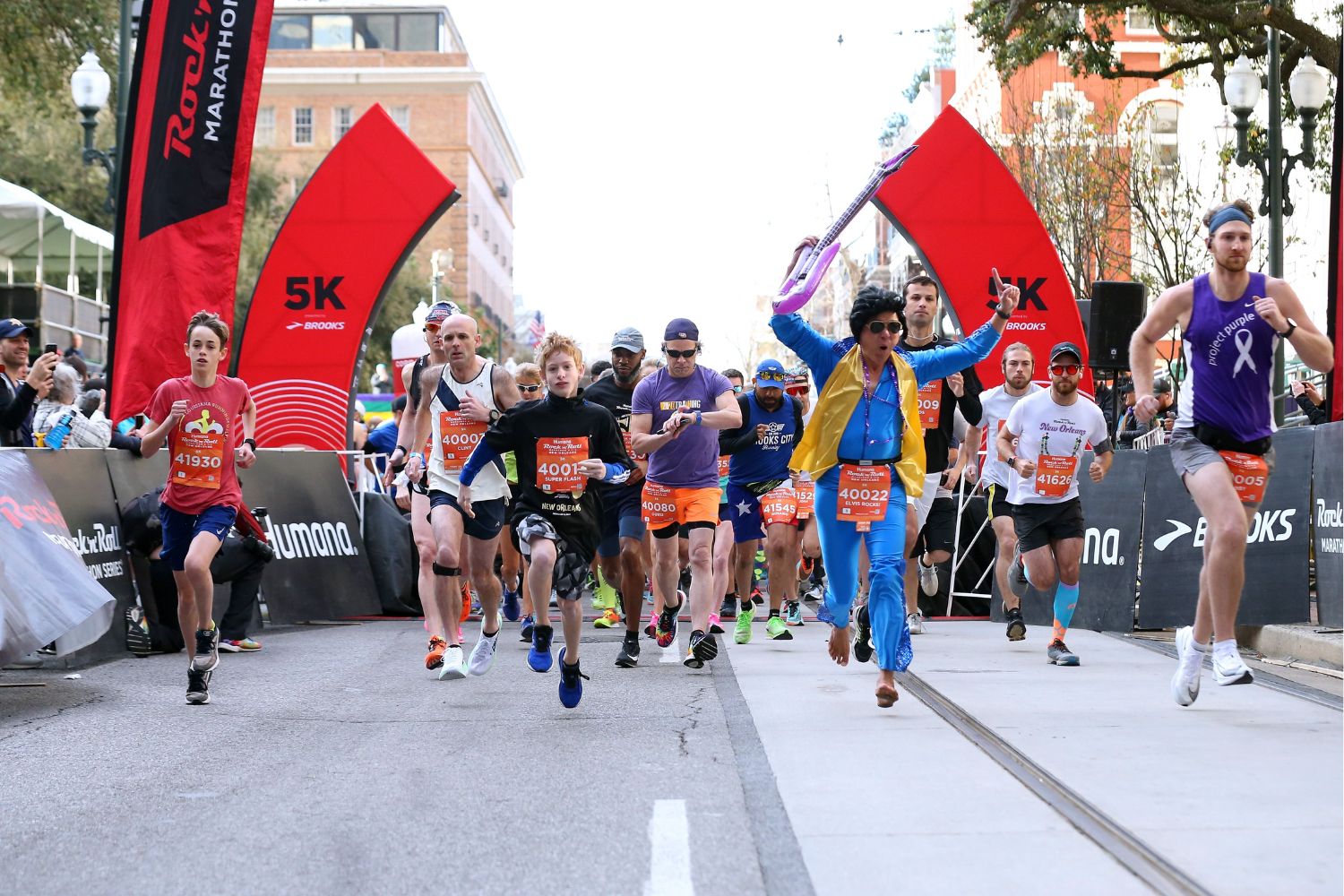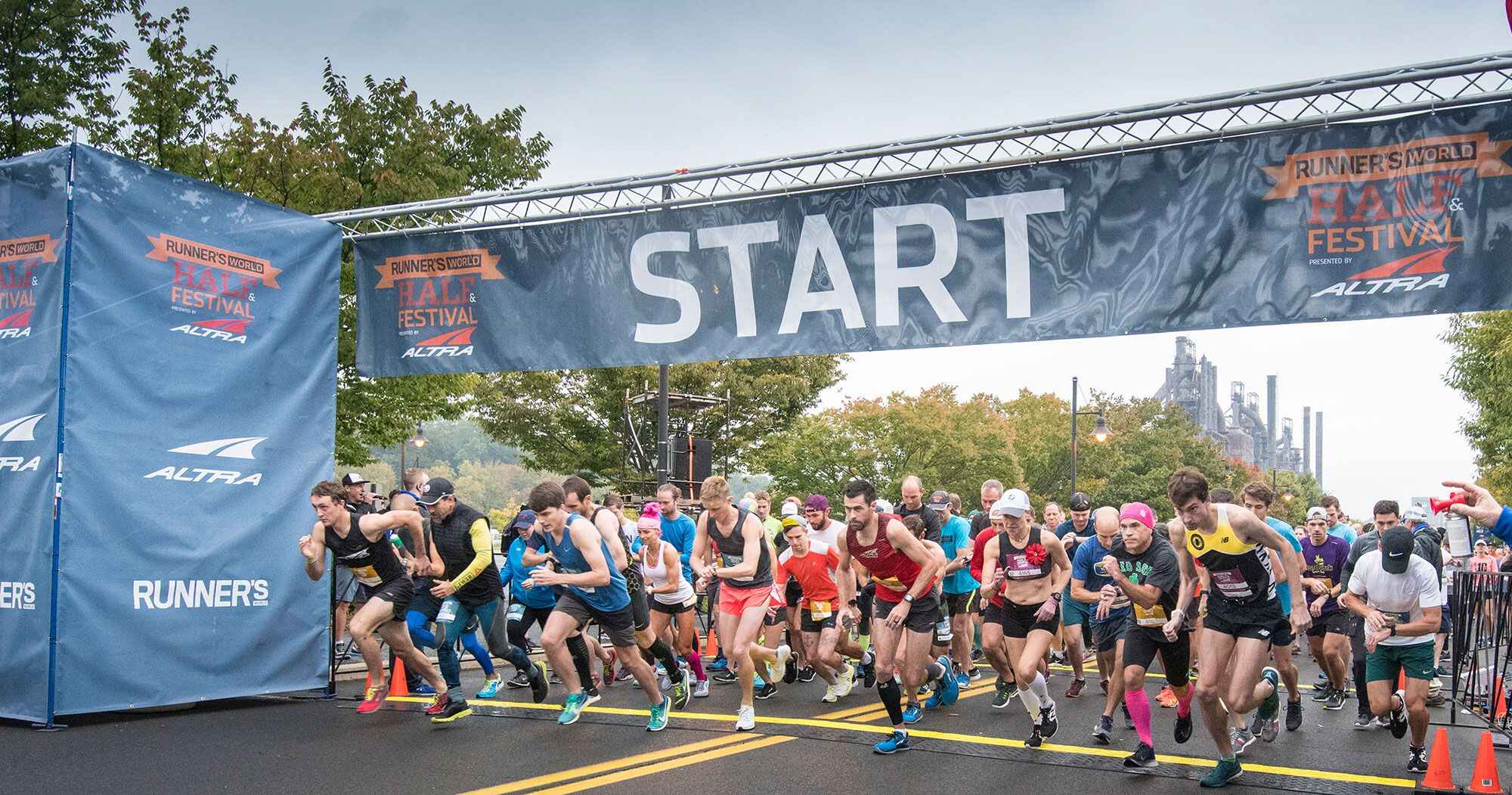

Featured
How Many Feet In A 5K Run
Modified: October 24, 2023
Discover how many feet are in a 5K run with our featured article. Learn about the distances and measurements involved in this popular race.
Introduction
Welcome to the world of running! Whether you are a seasoned marathoner or a beginner just starting to lace up your running shoes, the 5K run is a popular distance that offers a great balance of challenge and attainability. In this article, we will take a closer look at what a 5K run entails, how to calculate its distance, how long it typically takes to complete, and some of the benefits of participating in this type of event.
The 5K run, also known as the 5-kilometer run, is a race or a fun run that covers a distance of 5 kilometers (3.1 miles). This distance is a popular choice for runners of all levels because it provides a good balance between endurance and speed. It allows beginners to test their limits and build stamina while also challenging more experienced runners to push themselves for a strong finish.
Participating in a 5K run is not only a great way to stay fit and active, but it also provides an opportunity to engage with the running community, meet new people, and contribute to charitable causes. Many 5K events are organized to support specific causes such as cancer research, homelessness, or education, giving runners a chance to make a positive impact while pursuing their fitness goals.
Before we dive into the details of the 5K run, it’s important to note that the information provided in this article is applicable to regular outdoor running on a flat surface. If you plan to participate in a trail run or a themed 5K event with obstacles, the distance, duration, and training recommendations may vary.
Now that we have a general understanding of what a 5K run is and why it’s a popular choice among runners, let’s delve deeper into how the distance is calculated and how long it typically takes to complete.
Understanding the 5K Run
The 5K run is a well-known distance in the running community, but what does it actually entail? Let’s explore the details of this race and gain a better understanding of what to expect.
The term “5K” refers to the distance covered during the race – 5 kilometers, which is equivalent to approximately 3.1 miles. This distance has become incredibly popular due to its accessibility and challenging nature. It is suitable for runners of all levels, from beginners aiming to complete their first race to seasoned athletes looking to set a new personal record.
In a typical 5K race, participants start at a designated point and follow a predefined route to reach the finish line. The course may vary, ranging from a flat road to an undulating trail. It’s essential to familiarize yourself with the course map prior to the race to mentally prepare for any changes in elevation or terrain.
As with any race, the 5K run is often broken down into different age categories and sometimes includes separate divisions for male and female participants. This allows for fair competition and encourages each runner to strive for their personal best.
One of the key aspects of the 5K run is pacing. It’s important to find a sustainable pace that allows you to maintain a consistent speed throughout the race. Beginners often start with a slower pace and gradually increase their speed as they build endurance. Experienced runners may opt for a more aggressive approach, pushing themselves to maintain a faster pace and try to beat their personal best.
5K runs are often organized as standalone races or as part of larger running events such as marathons or charity runs. The atmosphere at these events is typically vibrant and energetic, with crowds of supporters cheering on the runners. This positive environment can be motivating and inspire participants to give their best effort.
Now that we have a better understanding of what the 5K run entails and the general atmosphere you can expect, let’s move on to the next section to learn how to calculate the actual distance of a 5K run.
Calculating the Distance
When it comes to calculating the distance of a 5K run, precision is important. Let’s explore how to accurately measure the distance and ensure you’re on track to complete your race.
The most common method for calculating the distance of a 5K run is to rely on GPS technology. Many runners use GPS-enabled running watches or smartphone apps that track their movements and provide real-time distance updates. These devices utilize satellite signals to measure the distance traveled, ensuring accurate and reliable results.
However, it’s important to note that the GPS distance may not be 100% accurate due to variables such as signal interference, tall buildings, or dense tree cover. As a result, it’s useful to have a general understanding of the typical 5K distance so you can still gauge your progress even without GPS technology.
In a 5K run, the distance is equivalent to 5 kilometers or approximately 3.1 miles. To put it into perspective, a 5K run is roughly equivalent to running three laps around a standard 400-meter track or completing a little over three miles on the road. Understanding this distance can help you pace yourself and set realistic goals during your training and on race day.
If you prefer a more traditional method of measuring the distance, you can use a measuring wheel. This device consists of a wheel attached to a handle, which you roll along the course to measure the distance. It’s important to ensure the course is flat and devoid of obstacles to get an accurate measurement. Measuring wheels can be useful for race organizers who need to mark the course accurately for participants.
Another factor to consider when calculating the distance is whether the race course is certified by a running association or governing body. Certified courses have been measured and verified to meet strict distance standards, ensuring that the stated distance is accurate. Participating in a certified race can give you peace of mind knowing that the distance you are running has been professionally measured.
Ultimately, the most important thing is to focus on your training and preparation rather than obsessing over the exact distance. Use tools like GPS devices or measuring wheels to get a rough estimate, but remember that the joy and accomplishment of completing a 5K run goes beyond the numbers.
Now that we have covered how to calculate the distance, let’s move on to the next section to learn about the typical duration of a 5K run.
Duration of a 5K Run
When it comes to the duration of a 5K run, it can vary greatly depending on individual fitness levels, training, and running experience. In this section, we will explore the typical duration of a 5K run and provide some insights into what you can expect.
For most runners, completing a 5K run takes between 20 and 30 minutes. Elite runners who have undergone intensive training and have exceptional speed can finish in under 20 minutes or even less. On the other hand, beginners or those who prefer a more leisurely pace may take 30 minutes or longer to complete the distance.
It’s crucial to note that the duration of a 5K run is not the sole measure of success. Every runner has their own goals and personal records to strive for, and it’s essential to focus on your individual progress rather than comparing yourself to others. The key is to challenge yourself and continually improve your own performance.
The duration of a 5K run can also be impacted by factors such as the terrain of the course, weather conditions, and personal fitness level. Running on a flat surface or a track can generally result in faster times compared to a hilly or off-road route. Similarly, running in favorable weather conditions, such as cool temperatures and low humidity, can be more conducive to faster times.
Training plays a crucial role in determining the duration of a 5K run. By following a structured training plan and gradually increasing your mileage and intensity, you can improve your speed and endurance, ultimately leading to a faster race time. Incorporating different types of workouts, such as interval training and tempo runs, can help improve your speed and stamina.
It’s important to remember that everyone progresses at their own pace, and setting realistic goals is key. As a beginner, your initial goal may simply be to complete the 5K run without stopping. As you gain more experience and build up your fitness, you can gradually work towards improving your time and setting new personal records.
Lastly, it’s worth mentioning that the duration of a 5K run is just a small part of the overall experience. The sense of accomplishment, the adrenaline rush during the race, and the camaraderie among fellow runners are the intangible rewards that make the 5K run worthwhile. Enjoy the journey and celebrate your achievements, regardless of the time it takes to complete the race.
Now that we have discussed the duration of a 5K run, let’s move on to the next section where we will explore the recommended training for a successful 5K run.
Recommended Training for a 5K Run
Preparing for a 5K run requires a well-rounded training plan that incorporates various elements to build endurance, speed, and overall fitness. In this section, we will outline some recommended training techniques and strategies to help you prepare for a successful 5K run.
1. Build up your base: Before diving into specific 5K training, it’s important to have a solid running base. Start by gradually increasing your mileage and getting comfortable with regular running. This will help condition your body and prevent injuries as you progress to more intense workouts.
2. Incorporate interval training: Interval training involves alternating between periods of high-intensity running and active recovery or rest. This type of training helps improve your speed and cardiovascular fitness. For example, you can perform intervals of running at a faster pace for a set distance or time, followed by a slower jog or walk to recover.
3. Include tempo runs: Tempo runs are performed at a comfortably hard pace, somewhere between your easy running pace and your race pace. These runs improve your lactate threshold, allowing you to maintain a faster pace for a longer duration. Start with shorter tempo runs and gradually increase the distance or time as you progress.
4. Long runs and endurance training: Long runs are crucial for building endurance and confidence to tackle the 5K distance. Gradually increase the duration of your long runs, aiming to cover a distance similar to or slightly longer than the race distance. This will help you mentally and physically prepare for the challenge of the race.
5. Strength training and cross-training: Don’t neglect strength training exercises, as they help improve muscular strength, stability, and prevent injuries. Focus on exercises that target the muscles used in running, such as squats, lunges, planks, and calf raises. Additionally, incorporating cross-training activities like cycling, swimming, or yoga can help improve overall fitness and prevent burnout.
6. Rest and recovery: It’s important to listen to your body and allow for proper rest and recovery. Taking regular rest days and incorporating active recovery workouts such as stretching or low-intensity workouts can help prevent overuse injuries and keep you motivated throughout your training.
Remember to gradually increase the intensity and duration of your workouts to avoid overexertion. A balanced and consistent training plan will help you steadily progress and reach your 5K running goals.
Now that we have discussed recommended training techniques, let’s move on to explore the benefits of participating in a 5K run.
Benefits of Participating in a 5K Run
Participating in a 5K run offers numerous benefits for both your physical and mental well-being. Let’s explore some of the advantages that come with taking part in this popular distance race.
1. Improved cardiovascular fitness: Engaging in regular 5K runs can significantly improve your cardiovascular health. The sustained effort of running helps strengthen your heart and lungs, enhancing their capacity to deliver oxygen to your muscles and organs. Over time, this can lead to improved overall endurance and stamina.
2. Weight management and calorie burn: Running a 5K can be an effective way to burn calories and manage weight. The high-intensity exercise of running utilizes a significant amount of energy, helping to create a calorie deficit. This can contribute to weight loss or weight maintenance, especially when combined with a balanced diet.
3. Increased bone density: Running is a weight-bearing exercise that helps promote healthy bone density and reduces the risk of osteoporosis. The repetitive impact stimulates the bones, which respond by becoming stronger and denser over time.
4. Stress reduction and mental well-being: Running, including participating in a 5K run, can have a positive impact on your mental health. The release of endorphins during exercise helps reduce stress, improve mood, and alleviate symptoms of anxiety and depression. The sense of accomplishment and the social aspect of participating in a 5K can also boost self-esteem and confidence.
5. Community and social connections: 5K runs often bring together a diverse group of individuals with a shared interest in running. Participating in these events provides an opportunity to connect with like-minded people, build friendships, and be part of a supportive community. The collective energy and encouragement during the race create a sense of camaraderie and motivation.
6. Goal setting and personal achievement: Setting a goal to complete a 5K run and working towards it provides a sense of purpose and accomplishment. Crossing the finish line, whether it’s your first 5K or a new personal record, instills a sense of pride and boosts self-confidence. It can also serve as a stepping stone to take on more challenging races or fitness goals in the future.
7. Charitable contributions and giving back: Many 5K runs are organized as fundraisers for charitable causes. By participating in these events, you not only improve your health but also contribute to meaningful causes and make a positive impact in your community.
Overall, participating in a 5K run offers a range of physical, mental, and social benefits. Whether you are running for fitness, personal achievement, or to support a cause, the journey of training and crossing the finish line can be immensely rewarding.
Now that we have explored the benefits of participating in a 5K run, let’s conclude our article with a brief summary of what we have discussed.
Conclusion
The 5K run is a popular distance that offers a balance of challenge and attainability for runners of all levels. In this article, we explored what a 5K run entails, how to calculate its distance, the typical duration of the race, recommended training techniques, and the benefits of participating in a 5K run.
Understanding the 5K run opens up opportunities to set goals, push boundaries, and engage with the running community. By knowing the distance of 5 kilometers and familiarizing yourself with the race atmosphere, you can embark on a memorable journey towards achieving your personal best.
Calculating the distance of a 5K run can be done through GPS technology or measuring wheels, but it’s important to remember that the joy of running goes beyond precise measurements. Embrace the experience and focus on the progress you make along the way.
The duration of a 5K run varies depending on factors such as fitness level and training. What matters most is challenging yourself and setting realistic goals. Celebrate your achievements, regardless of the time it takes to cross the finish line.
To prepare for a successful 5K run, we discussed recommended training techniques such as interval training, tempo runs, long runs, strength training, and adequate rest. Following a balanced training plan allows you to improve your speed, endurance, and overall fitness.
Participating in a 5K run offers numerous benefits for both physical and mental well-being. From improved cardiovascular health and weight management to stress reduction and community engagement, running has the power to enhance various aspects of your life.
In conclusion, participating in a 5K run is a rewarding experience that combines fitness, personal achievement, and social connections. Embrace the challenge, enjoy the journey, and celebrate your accomplishments. Lace up those running shoes, and embark on your 5K adventure!


